Growing Okra at Home can seem daunting, but trust me, it’s more rewarding than you might think! Have you ever dreamed of plucking fresh, vibrant okra pods straight from your own backyard, ready to be transformed into a delicious gumbo or a crispy, Southern-fried delight? Well, stop dreaming and start doing! This DIY guide is your key to unlocking the secrets of successful okra cultivation, even if you’re a complete beginner.
Okra, with its fascinating history tracing back to ancient Ethiopia, has been a culinary staple in various cultures for centuries. From its use in traditional African dishes to its prominent role in Southern American cuisine, okra boasts a rich heritage. But beyond its culinary appeal, growing okra at home offers a unique connection to nature and a sense of accomplishment that’s hard to beat.
In today’s world, where fresh, locally sourced produce is increasingly valued, knowing how to cultivate your own food is a valuable skill. Plus, store-bought okra simply can’t compare to the flavor and freshness of homegrown varieties. This DIY guide will provide you with simple, effective tricks and hacks to ensure a bountiful harvest, regardless of your gardening experience. So, let’s get our hands dirty and embark on this exciting journey of growing okra at home!
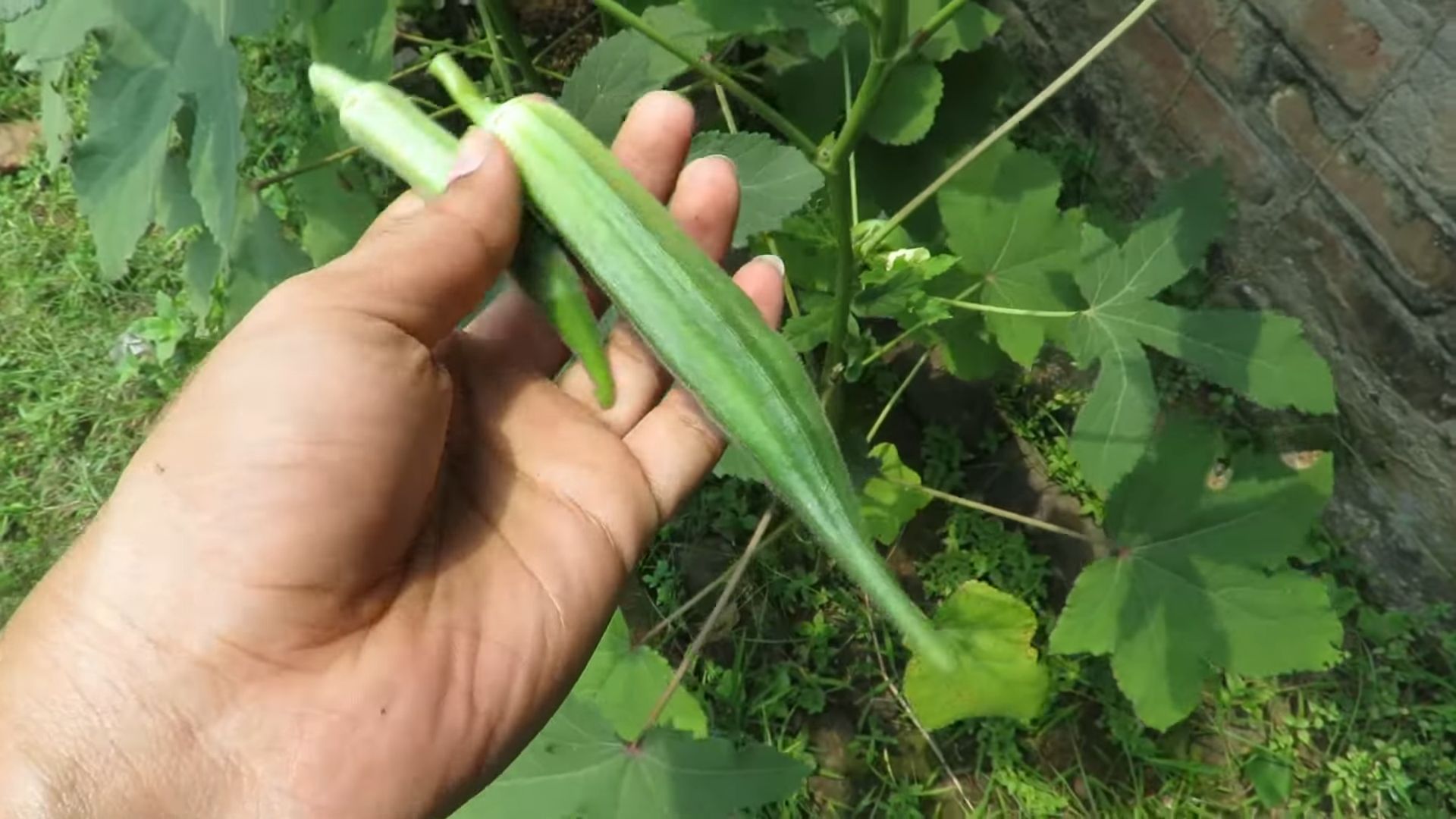
Growing Okra at Home: A Beginner’s Guide
Hey there, fellow gardening enthusiasts! I’m so excited to share my experience and tips for growing okra at home. Okra, also known as lady’s fingers, is a warm-season vegetable that’s not only delicious but also surprisingly easy to grow. Plus, those beautiful hibiscus-like flowers are a real treat for the eyes! Let’s dive in and get your okra patch started.
Choosing the Right Okra Variety
Before we get our hands dirty, let’s talk about okra varieties. There are tons to choose from, each with its own unique characteristics. Here are a few popular options:
* Clemson Spineless: This is a classic and widely grown variety. It produces dark green, ribbed pods that are tender and virtually spineless, making harvesting a breeze.
* Burgundy: If you’re looking for something a little different, Burgundy okra boasts beautiful red pods that add a pop of color to your garden. The pods turn green when cooked.
* Emerald: As the name suggests, Emerald okra produces smooth, emerald-green pods that are known for their excellent flavor and tenderness.
* Dwarf Green Long Pod: Perfect for smaller gardens or containers, this variety produces shorter plants with long, slender green pods.
I personally love Clemson Spineless because it’s reliable and easy to grow, but feel free to experiment and find the variety that best suits your taste and garden space.
Preparing Your Okra Patch
Okra thrives in warm weather and needs plenty of sunshine, so choosing the right location is crucial. Here’s what you need to consider:
* Sunlight: Okra needs at least 6-8 hours of direct sunlight per day. Choose a spot in your garden that gets plenty of sun throughout the day.
* Soil: Okra prefers well-drained soil that’s rich in organic matter. Amend your soil with compost or well-rotted manure to improve its fertility and drainage. A slightly acidic to neutral soil pH (6.0-7.0) is ideal.
* Spacing: Okra plants can grow quite tall (3-6 feet), so give them enough space to spread out. Space plants 12-18 inches apart in rows that are 3-4 feet apart. This allows for good air circulation and prevents overcrowding.
Planting Okra Seeds
Okra is typically grown from seed, and the best time to plant is after the last frost when the soil has warmed up to at least 65°F (18°C). Here’s how to plant okra seeds:
1. Soak the Seeds: To improve germination, soak the okra seeds in warm water for 12-24 hours before planting. This helps soften the seed coat and encourages sprouting.
2. Prepare the Planting Holes: Dig holes about 1 inch deep and space them according to your chosen variety’s spacing requirements (12-18 inches apart).
3. Plant the Seeds: Place 2-3 seeds in each hole. This increases the chances of at least one seed germinating.
4. Cover and Water: Gently cover the seeds with soil and water thoroughly. Keep the soil consistently moist until the seedlings emerge.
5. Thin the Seedlings: Once the seedlings are a few inches tall, thin them to one plant per hole. Choose the strongest and healthiest seedling to keep.
Caring for Your Okra Plants
Once your okra plants are established, they’re relatively low-maintenance. Here’s what you need to do to keep them happy and healthy:
* Watering: Okra needs consistent watering, especially during hot, dry weather. Water deeply and regularly, aiming for about 1 inch of water per week. Avoid overhead watering, as this can promote fungal diseases. Drip irrigation or soaker hoses are great options.
* Fertilizing: Okra is a heavy feeder, so regular fertilization is important. Apply a balanced fertilizer (e.g., 10-10-10) every 4-6 weeks. You can also side-dress with compost or well-rotted manure.
* Weeding: Keep the area around your okra plants free of weeds. Weeds compete with okra for nutrients and water, so regular weeding is essential. Mulching can help suppress weeds and retain moisture in the soil.
* Pest Control: Okra can be susceptible to pests like aphids, flea beetles, and corn earworms. Inspect your plants regularly for signs of infestation. You can control these pests with insecticidal soap, neem oil, or Bacillus thuringiensis (Bt).
* Pruning: While okra doesn’t require extensive pruning, you can remove any yellowing or damaged leaves to improve air circulation and prevent disease.
Harvesting Okra
Harvesting okra at the right time is crucial for ensuring tender and flavorful pods. Here’s what you need to know:
* Timing: Okra pods are typically ready to harvest 50-65 days after planting. The ideal time to harvest is when the pods are 2-4 inches long. Larger pods can become tough and fibrous.
* Frequency: Okra plants produce pods continuously throughout the growing season, so you’ll need to harvest them every 1-2 days. This encourages the plant to produce more pods.
* Method: Use a sharp knife or pruning shears to cut the pods from the plant. Be careful not to damage the plant. Wear gloves when harvesting okra, as the pods can be prickly and irritating to the skin.
* Handling: Okra pods are delicate and bruise easily, so handle them with care. Store them in the refrigerator for up to a week.
Dealing with Common Okra Problems
Even with the best care, you might encounter some problems while growing okra. Here are a few common issues and how to address them:
* Yellowing Leaves: Yellowing leaves can be caused by nutrient deficiencies, overwatering, or fungal diseases. Check your soil pH and nutrient levels, and adjust your watering schedule accordingly. Apply a fungicide if necessary.
* Stunted Growth: Stunted growth can be caused by poor soil, lack of sunlight, or pest infestations. Amend your soil with compost, ensure your plants are getting enough sunlight, and control any pests.
* Blossom End Rot: Blossom end rot is a condition that causes the ends of the okra pods to rot. It’s usually caused by calcium deficiency or inconsistent watering. Amend your soil with calcium and water regularly.
* Pest Infestations: As mentioned earlier, okra can be susceptible to pests like aphids, flea beetles, and corn earworms. Use insecticidal soap, neem oil, or Bacillus thuringiensis (Bt) to control these pests.
Enjoying Your Homegrown Okra
Now for the best part: enjoying the fruits (or rather, vegetables) of your labor! Okra is incredibly versatile and can be used in a variety of dishes. Here are a few ideas:
* Fried Okra: A classic Southern dish, fried okra is crispy, golden brown, and utterly delicious.
* Okra Gumbo: Okra is a key ingredient in gumbo, a flavorful stew that’s a staple of Louisiana cuisine.
* Roasted Okra: Roasting okra brings out its natural sweetness and creates a slightly caramelized flavor.
* Pickled Okra: Pickled okra is a tangy and crunchy treat that’s perfect as a snack or side dish.
* Okra Curry: Okra can be used in a variety of curries, adding a unique texture and flavor.
I personally love frying okra with a little cornmeal and seasoning, but feel free to experiment and find your favorite way to enjoy this versatile vegetable.
Extending the Okra Season
Want to enjoy okra for as long as possible? Here are a few tips for extending the okra season:
* Succession Planting: Plant okra seeds every 2-3 weeks to ensure a continuous harvest throughout the growing season.
* Cold Frames or Row Covers: Use cold frames or row covers to protect your okra plants from early frosts.
* Overwintering: In mild climates, you may be able to overwinter your okra plants by cutting them back and mulching heavily.
Saving Okra Seeds
If you want to save seeds from your okra plants for next year, here’s how:
1. Allow Pods to Mature: Let a few okra pods mature on the plant until they are dry and brown.
2. Harvest the Pods: Carefully harvest the dry pods and remove the seeds.
3. Dry the Seeds: Spread the seeds out on a tray and let them dry completely.
4. Store the Seeds: Store the dried seeds in an airtight container in a cool, dry place.
With a little care and attention, you can enjoy a bountiful harvest of homegrown okra all season long. Happy gardening!
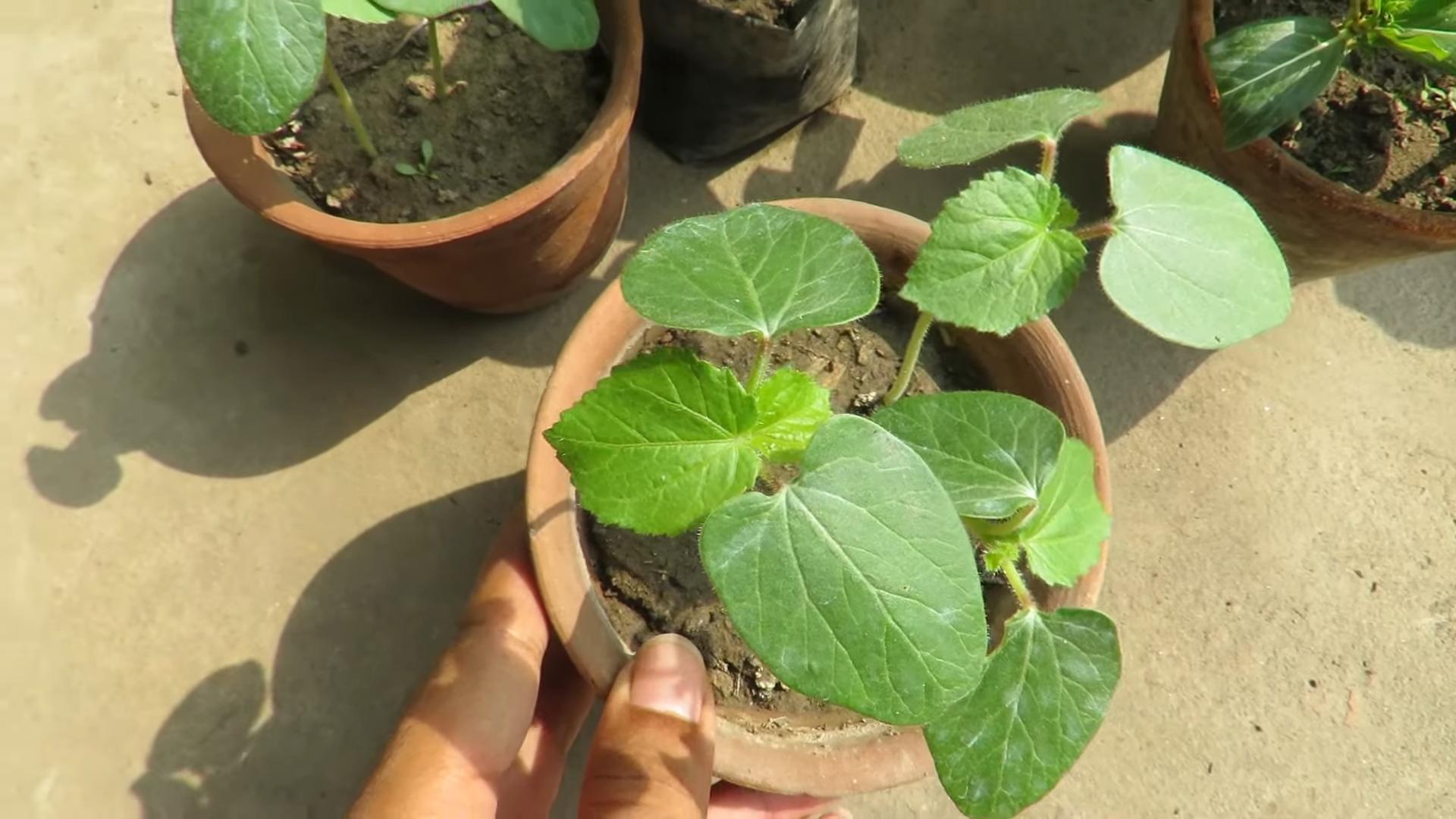
Conclusion
So, there you have it! Growing okra at home is not only achievable, but it’s also incredibly rewarding. From the vibrant blooms to the crisp, delicious pods, every stage of the process offers a unique connection to your food. We’ve walked you through the essentials, from selecting the right variety and preparing your soil to nurturing your plants and harvesting your bounty.
Why is this DIY trick a must-try? Because fresh, homegrown okra surpasses anything you can find at the grocery store. The flavor is brighter, the texture is firmer, and you have complete control over the growing process, ensuring that your okra is free from unwanted chemicals and pesticides. Plus, the satisfaction of harvesting your own vegetables is simply unmatched.
But the fun doesn’t stop there! Feel free to experiment with different okra varieties. Clemson Spineless is a classic choice, but why not try Burgundy okra for its beautiful red pods, or Emerald okra for its exceptional tenderness? You can also explore companion planting to enhance your okra’s growth. Basil, thyme, and marigolds are excellent choices for deterring pests and attracting beneficial insects. Consider adding a trellis for support, especially if you’re growing taller varieties. This not only helps with air circulation but also makes harvesting easier.
Don’t be afraid to get your hands dirty and embrace the learning process. Gardening is all about experimentation, and even if you encounter a few challenges along the way, the rewards are well worth the effort. Remember to adjust your watering schedule based on your local climate and soil conditions. Regular fertilization is key to promoting healthy growth and abundant yields. And keep a watchful eye out for common okra pests like aphids and flea beetles, addressing them promptly with organic pest control methods.
We’re confident that with a little patience and dedication, you’ll be enjoying a bountiful harvest of homegrown okra in no time. So, grab your seeds, prepare your garden, and embark on this exciting culinary adventure. We encourage you to try this DIY trick and discover the joy of growing your own okra.
And most importantly, we want to hear about your experiences! Share your photos, tips, and stories in the comments below. Let’s create a community of okra enthusiasts and learn from each other’s successes and challenges. Happy gardening! Let us know what your favorite way to prepare your homegrown okra is! Do you prefer it fried, stewed, or pickled? We’re always looking for new and exciting recipes to try.
Frequently Asked Questions (FAQ) About Growing Okra
What is the best time to plant okra?
The ideal time to plant okra is in late spring or early summer, after the last frost has passed and the soil has warmed up to at least 65 degrees Fahrenheit (18 degrees Celsius). Okra thrives in warm weather and requires a long growing season of at least 50-60 days. Planting too early can result in stunted growth and reduced yields. In warmer climates with longer growing seasons, you may even be able to plant a second crop of okra in mid-summer for a fall harvest.
How much sunlight does okra need?
Okra requires at least 6-8 hours of direct sunlight per day to thrive. Choose a planting location that receives full sun throughout the day. Insufficient sunlight can lead to weak, leggy plants and reduced pod production. If you live in a particularly hot climate, some afternoon shade may be beneficial to prevent the plants from overheating.
What type of soil is best for growing okra?
Okra prefers well-drained, fertile soil with a slightly acidic to neutral pH (6.0-7.0). Amend heavy clay soils with compost or other organic matter to improve drainage and aeration. Sandy soils can be improved by adding compost or peat moss to increase water retention. Before planting, incorporate a balanced fertilizer into the soil to provide essential nutrients for healthy growth.
How often should I water okra plants?
Okra plants need consistent moisture, especially during hot, dry weather. Water deeply and regularly, aiming to keep the soil consistently moist but not waterlogged. Avoid overhead watering, as this can promote fungal diseases. Drip irrigation or soaker hoses are ideal for delivering water directly to the roots. Mulching around the plants can help retain moisture and suppress weeds.
How do I fertilize okra plants?
Okra is a heavy feeder and benefits from regular fertilization. Apply a balanced fertilizer (e.g., 10-10-10) at planting time and then side-dress with a nitrogen-rich fertilizer every 4-6 weeks during the growing season. Alternatively, you can use organic fertilizers such as compost tea or fish emulsion. Avoid over-fertilizing, as this can lead to excessive foliage growth at the expense of pod production.
When and how should I harvest okra?
Okra pods are typically ready for harvest 50-60 days after planting. Harvest the pods when they are young and tender, typically 2-4 inches long. Use a sharp knife or pruning shears to cut the pods from the plant, leaving a short stem attached. Harvest okra every 1-2 days to encourage continuous production. Overripe pods become tough and fibrous.
What are some common pests and diseases that affect okra?
Okra can be susceptible to various pests and diseases, including aphids, flea beetles, corn earworms, and fungal diseases like powdery mildew and Fusarium wilt. Monitor your plants regularly for signs of infestation or disease. Use organic pest control methods such as insecticidal soap, neem oil, or diatomaceous earth to control pests. Ensure good air circulation and avoid overhead watering to prevent fungal diseases. Remove and destroy any infected plants to prevent the spread of disease.
Can I grow okra in containers?
Yes, okra can be successfully grown in containers, provided you choose a large enough pot (at least 10-15 gallons) and use a well-draining potting mix. Select a sunny location for your container okra plants and water them regularly. Fertilize them every 2-3 weeks with a liquid fertilizer. Container-grown okra may require more frequent watering and fertilization than okra grown in the ground.
How do I save okra seeds for next year?
To save okra seeds, allow some of the pods to mature fully on the plant. The pods will become dry and brown. Once the pods are completely dry, harvest them and remove the seeds. Spread the seeds out on a tray to dry completely for a few days. Store the dried seeds in an airtight container in a cool, dry place. Okra seeds can remain viable for several years if stored properly.
Why is my okra plant not producing pods?
There are several reasons why your okra plant may not be producing pods. Insufficient sunlight, poor soil fertility, inadequate watering, and pest infestations can all contribute to reduced pod production. Ensure that your okra plant is receiving at least 6-8 hours of direct sunlight per day, is planted in fertile, well-drained soil, and is watered regularly. Control pests promptly and fertilize your plant every 4-6 weeks during the growing season. If your plant is still not producing pods, consider testing your soil to determine if there are any nutrient deficiencies.


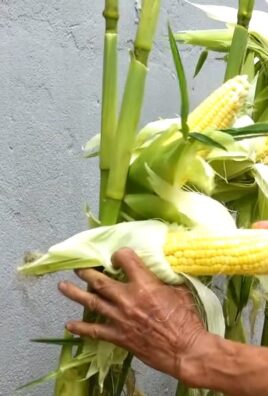
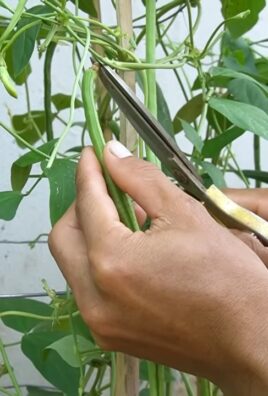
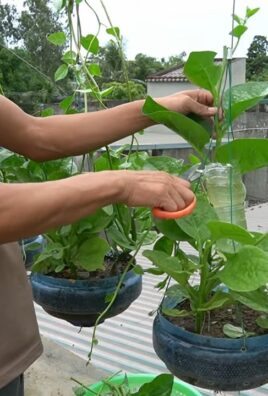
Leave a Comment